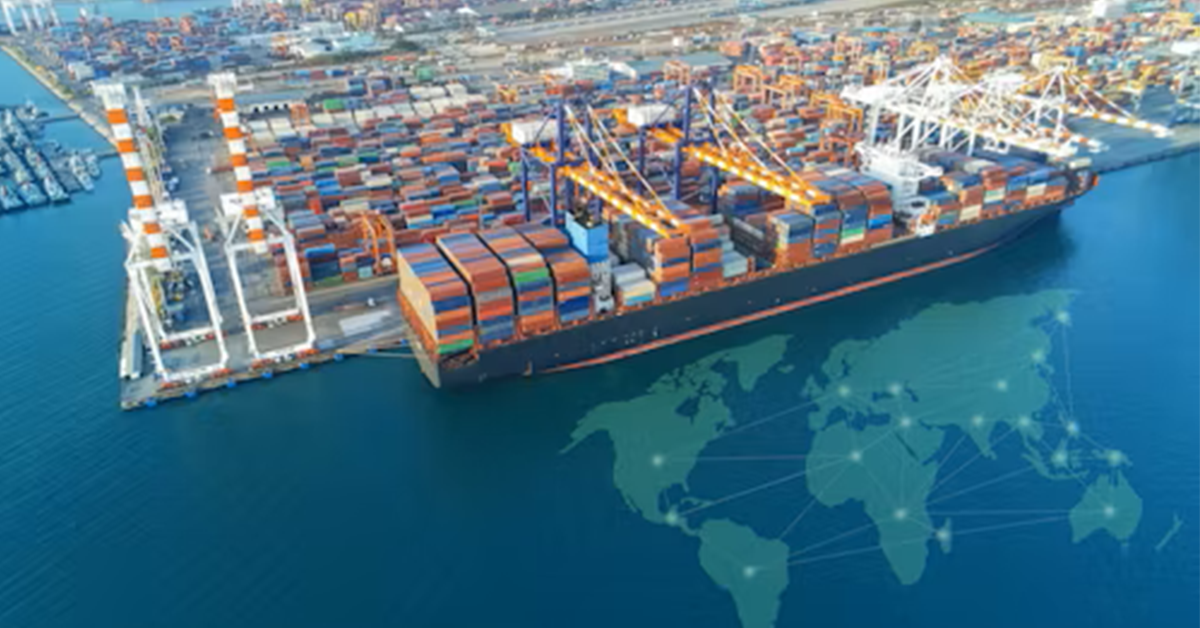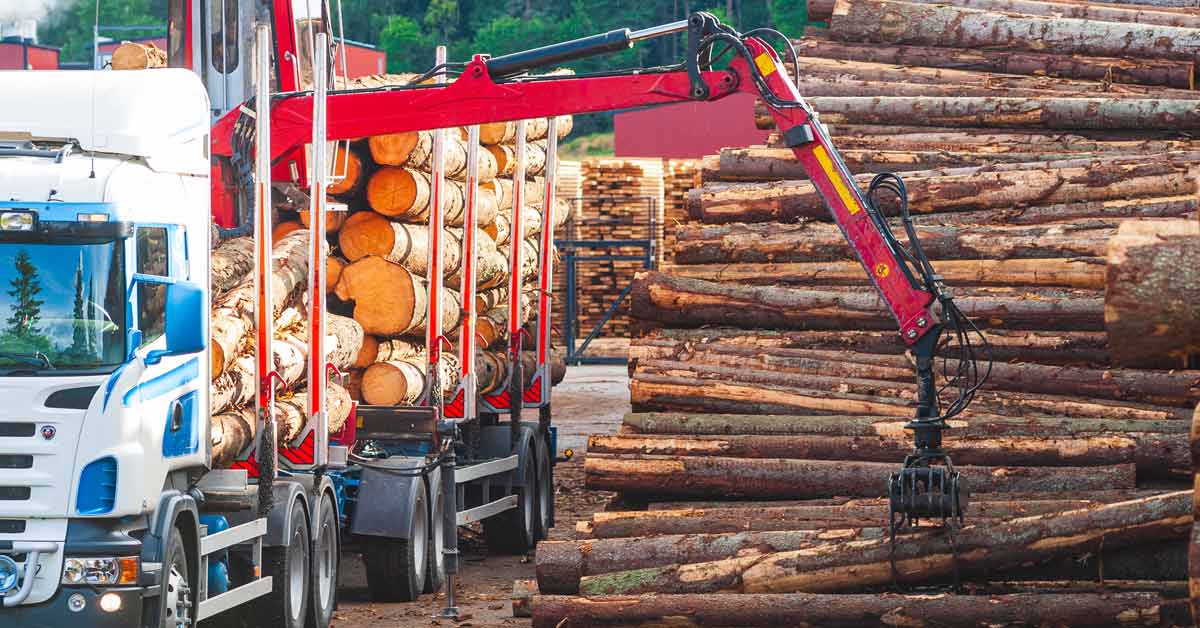4 min read
The Continuing Effects of Trade Tensions on Pulp and Paper Markets
ResourceWise
:
Aug 12, 2025 3:27:37 PM

Since the onset of the Trump-era trade wars, tariffs and trade tensions have become a defining characteristic of US economic policy—and their long tail continues to shape the global pulp and paper industry well into 2025. This has led to shifting supply chains, evolving trade relationships, and strategic recalibrations among producers and buyers alike.
Tariffs in 2025: Where Things Stand
As of mid-2025, the global tariff environment has grown increasingly unpredictable. The United States has reinforced its protectionist stance with new and expanded duties aimed at key trade partners. Most notably, a 50% tariff on imports from Brazil was enacted, targeting a wide range of products. Wood pulp and certain industrial inputs were explicitly exempted, though lingering confusion around the policy's scope—especially for value-added pulp and paper goods—has led companies to seek clarity and reassess sourcing strategies.
In parallel, the US also imposed an additional 25% tariff on select goods from India, reportedly due to trade imbalances and intellectual property concerns. While details remain limited, the Indian government has filed formal objections with the WTO, signaling broader tensions in U.S.-India trade relations.
Many of the early US tariffs implemented—such as those targeting Canadian softwood lumber, Chinese finished goods, and EU paperboard products—remain in place. Retaliatory actions from affected countries continue as well, contributing to a layered and retaliatory trade system that complicates sourcing decisions and inflates cross-border transaction costs.
In response to this complex tariff environment, companies are increasingly focusing on supplier diversification, regional trade agreements, and nearshoring strategies to reduce risk. While some nations—like Mexico and Chile—have emerged as viable alternatives for sourcing pulp, packaging, and paper products, the reshuffling of trade lanes is still underway. This continued uncertainty is prompting industry stakeholders to reassess logistics networks, revisit pricing models, and engage more deeply in trade policy advocacy.
Corporate Responses: Navigating an Uneven Recovery
- Mercer International has reported continued margin pressure in 2025 due to rising input costs and weaker European demand. CEO Juan Carlos Bueno noted that tariff-related friction is disrupting customer relationships and order cycles. The company has paused expansion plans in Central Europe, reflecting broader uncertainty tied to global trade policy.
- Rayonier Advanced Materials (RYAM) is also feeling the effects of trade volatility, particularly in cellulose specialties. With order delays from Asia, the company is shifting focus to Latin America and South Asia.
- Procter & Gamble has been transparent about their pricing strategy, publicly acknowledging that tariff-related cost increases on key inputs—such as pulp and packaging materials—would result in higher prices for everyday paper products, including toilet paper and paper towels.
Realignment Across Regions
Sweden: Policy Pushback Continues
The Swedish Forest Industries Federation challenged the logic and legality of US-imposed tariffs. In May 2025, the Federation filed a joint statement with several EU trade bodies calling for World Trade Organization arbitration, labeling the tariffs “anachronistic and unjustified.”
While the recent US–EU trade deal set a 15% tariff ceiling on most goods and helped ease broader trade tensions, it did not specifically alter or remove the existing 10% duty on Swedish pulp and paper exports to the United States. As a result, Swedish exporters have instead started to turn to alternative markets to offset lost US business.
Mexico: North American Growth Hub
Mexico has emerged as one of the biggest winners in the ongoing tariff reshuffle. According to The Pulp and Paper Times, demand from US importers for Mexican-produced tissue and packaging board rose by 16% year-over-year in the first half of 2025. This has prompted increased investment in mill capacity, particularly in the Nuevo León and Jalisco regions.
Mexican producers are also forming new supply partnerships with mid-sized US manufacturers seeking tariff-free pulp and packaging inputs. Joint ventures and regional trade agreements under USMCA have made cross-border logistics more predictable than trans-Pacific alternatives.
India: Growing Export Confidence
India has successfully positioned itself as a low-risk trade partner amid US-China tensions. Indian exporters have increased shipments of specialty papers, recycled fiber, and boardstock to North American and European buyers. Government-backed initiatives such as the PLI (Production-Linked Incentive) scheme for paper and packaging have also boosted competitiveness.
Industry leaders in India have expressed optimism about sustaining momentum. The Indian Paper Manufacturers Association (IPMA) projects a 25% increase in export volume by year-end, as Western buyers continue to diversify away from Chinese and Southeast Asian sources.
Latin America: The Rise of Brazil and Chile
Beyond Mexico, Brazil, Chile, and Uruguay are experiencing increased demand from foreign buyers. With expansive forest resources and relatively low labor costs, these countries are being viewed as geopolitically stable alternatives for both pulp and cellulose production.
Brazilian pulp exports to the United States saw a notable increase in early 2025 , driven largely by rising demand and tariffs on competing suppliers like China and the EU. Chilean producers are also seeing increased investment, especially in bleached hardwood kraft pulp (BHKP) facilities.
Why It Matters: Strategic Implications for 2025 and Beyond
Extreme Pricing Volatility – With Brazilian pulp markets in flux, companies must expect price spikes, renegotiate supply contracts, and explore fixed‑price hedging or forward buying arrangements. Transparency in price components is now more critical than ever.
Supply Chain Restructuring – Buyers are diversifying suppliers to regions with stable trade exposure. Investments in logistics, near‑sourcing, and production flexibility are being prioritized to mitigate future shocks.
Policy and Market Intelligence – Monitoring trade policy developments in real time has become crucial for reducing potential impacts. By following updates from trade organizations, WTO filings, and official government notices, companies can anticipate changes early and modify operational plans, sourcing strategies, and cost structures before disruptions happen.
Environmental Strategy Integration – Companies must consider carbon regulation exposure—not just tariffs. CBAMs and national climate policies can compound cost burdens on cross-border pulp imports, making sustainability-related sourcing decisions increasingly material.
Why Staying Ahead Matters in 2025
The global pulp and paper industry now finds itself at the intersection of trade policy, geopolitical friction, and regulatory change. Tariffs, which began as a temporary tool of leverage, have become a permanent variable in how the industry operates. Their impact extends beyond profit margins to influence investment decisions, R&D pipelines, consumer prices, and long-term supply contracts.
In this environment, companies must move beyond reactive tactics. Strategic adaptation now requires:
- Diversified supplier bases to mitigate trade risk
- Flexible pricing models to respond to cost volatility
- Real-time intelligence on trade policy updates
- Collaboration with policymakers and trade bodies to shape fairer outcomes
For stakeholders, from corporate strategists to logistics managers to institutional investors, the lesson of 2025 is clear: trade tensions are no longer temporary disruptions, but systemic forces that require forward-looking, cross-functional strategies.
ResourceWise’s industry intelligence platforms, such as FisherSolve, equip stakeholders with the data and insights needed to navigate today's volatile market conditions with confidence.
Covering every pulp and paper mill worldwide, FisherSolve delivers detailed information on assets, production, costs, environmental performance, and carbon footprint. By integrating this intelligence into strategic planning, companies can identify risks early, evaluate alternative supply options, and make informed decisions that protect competitiveness in an unpredictable trade environment.





